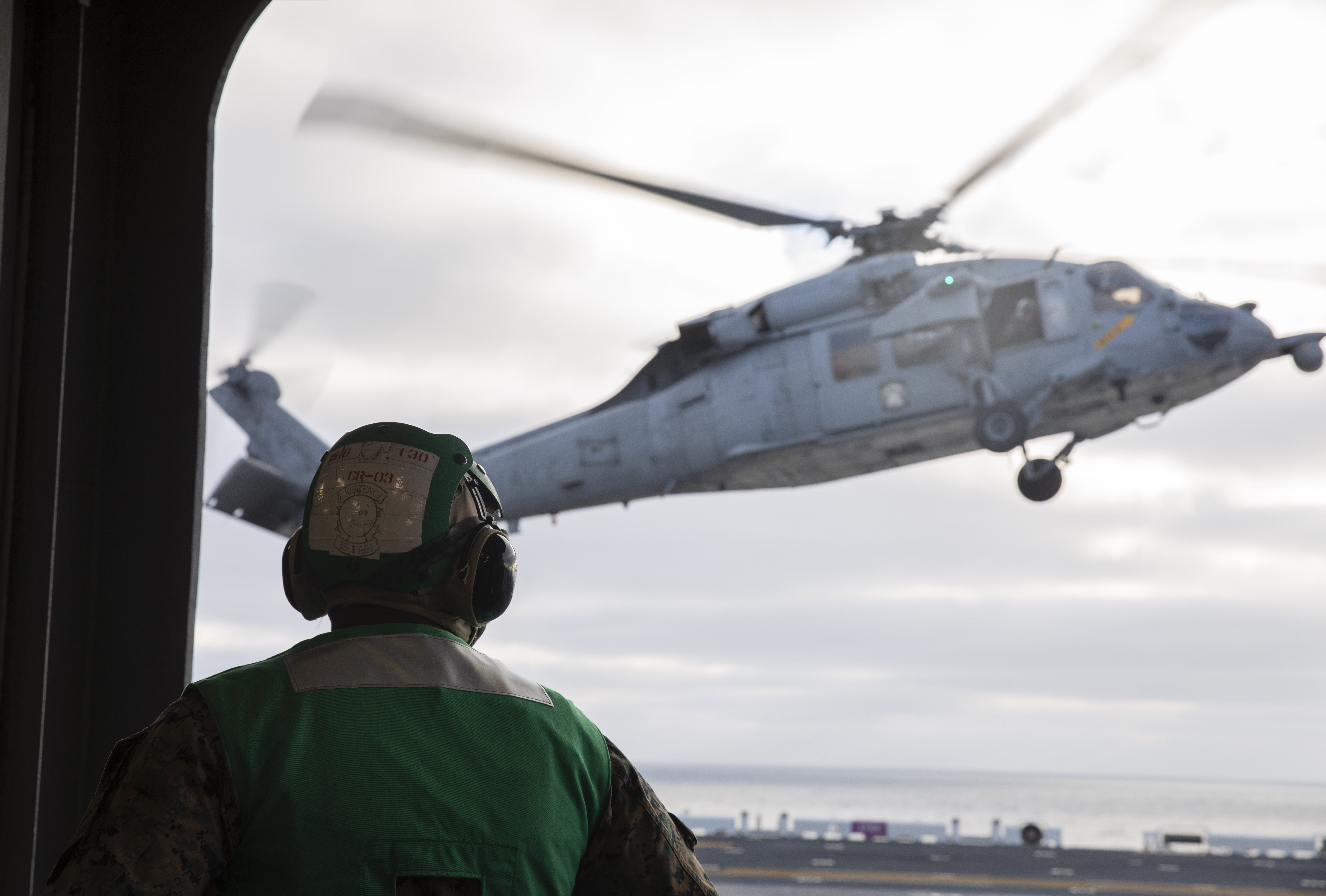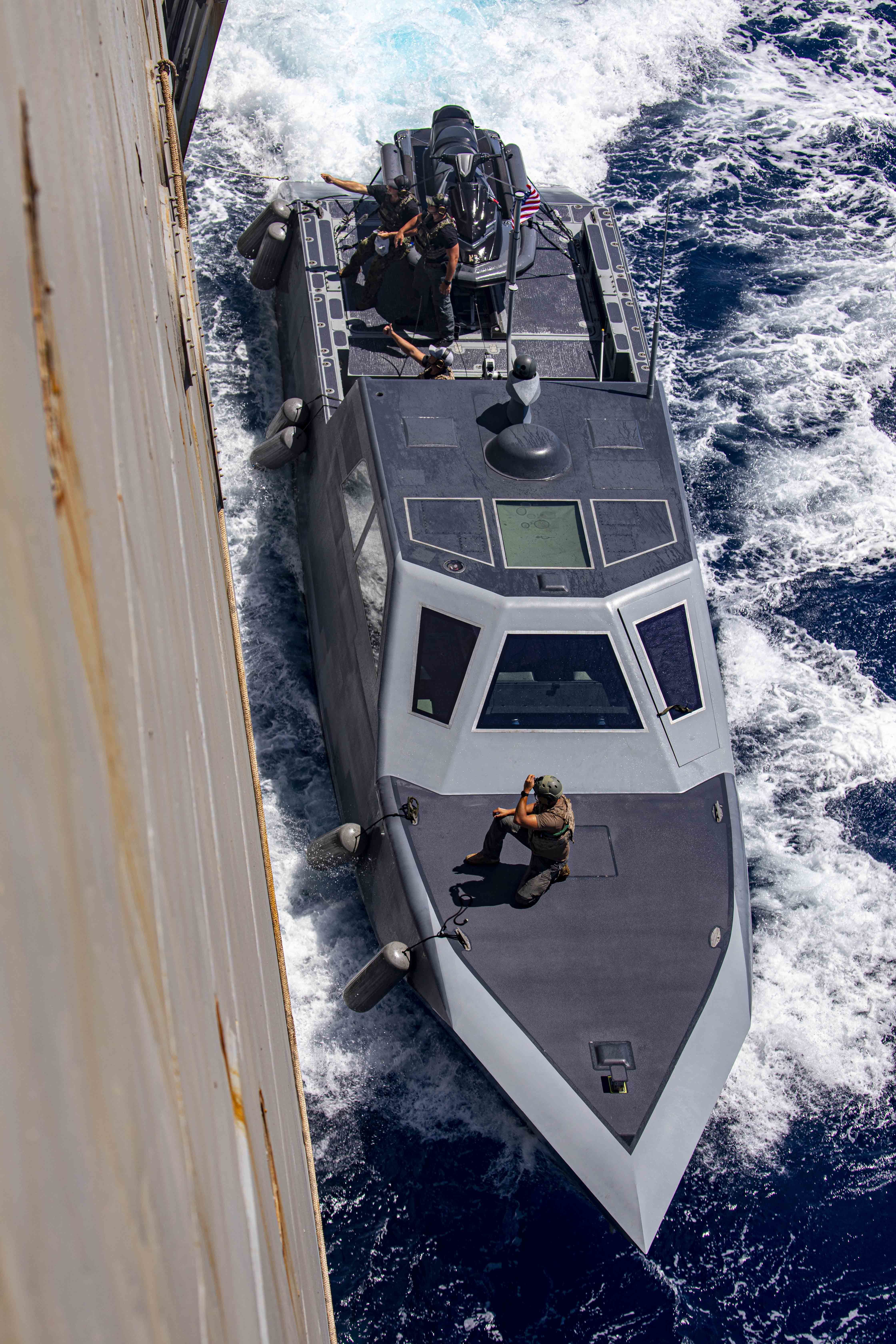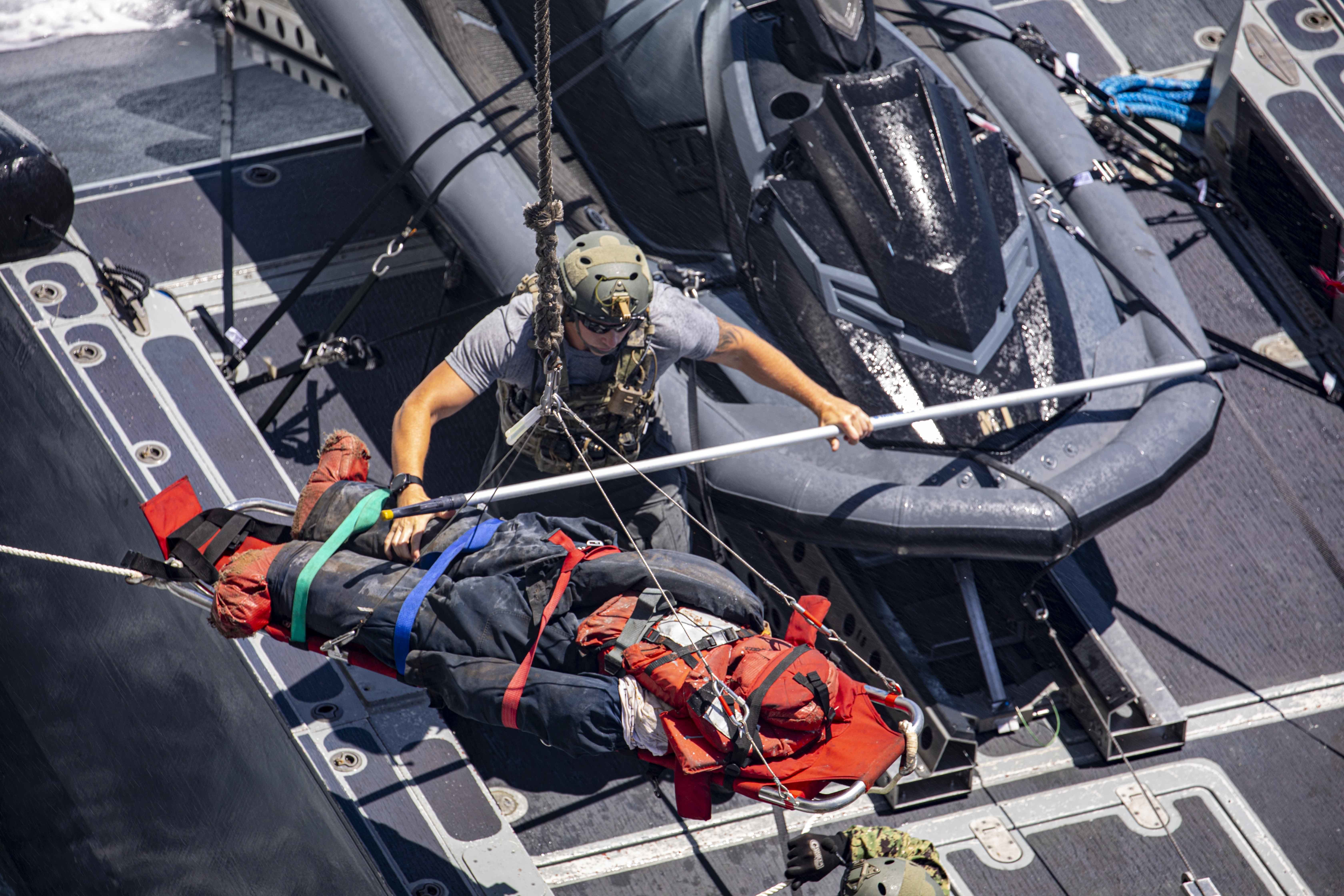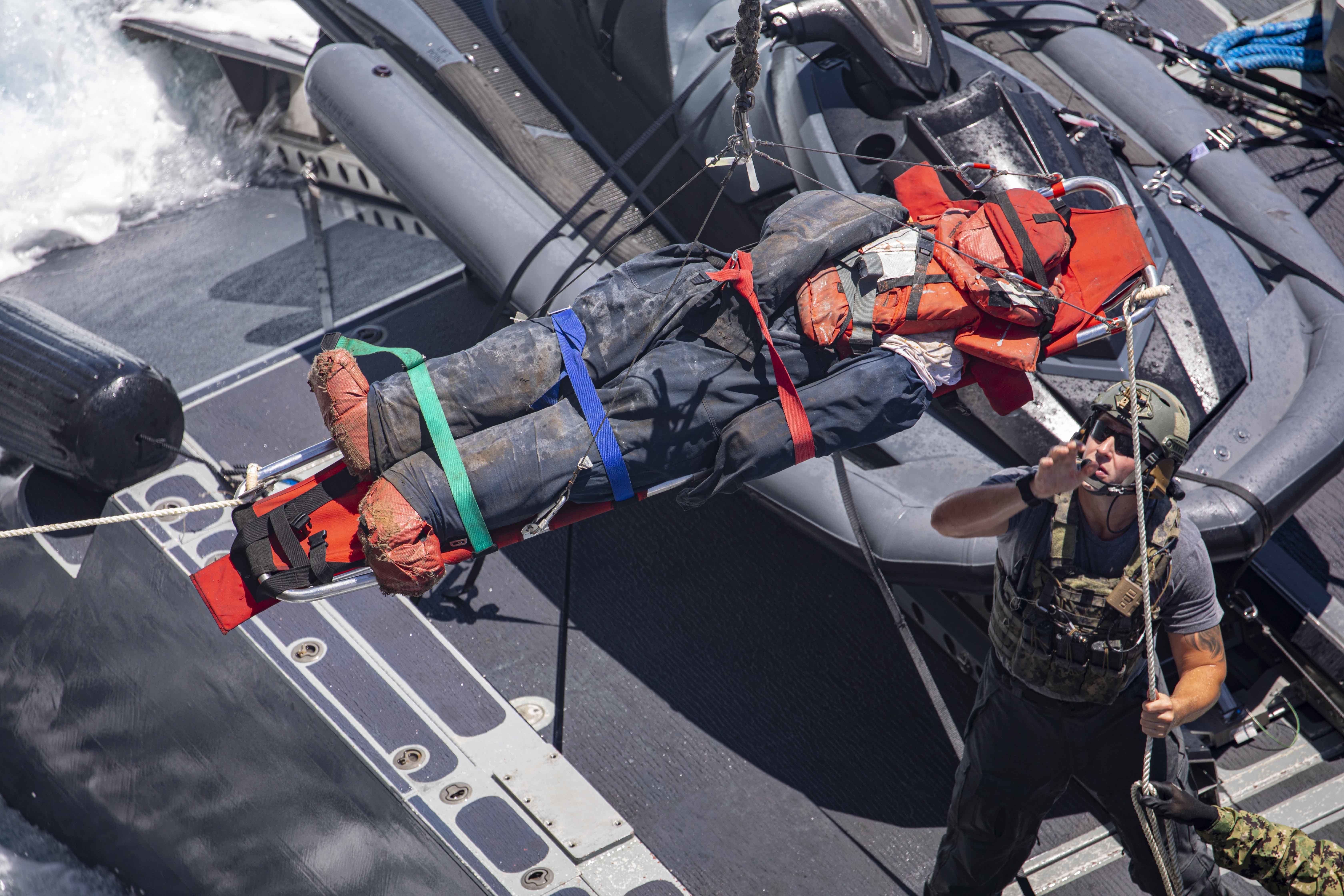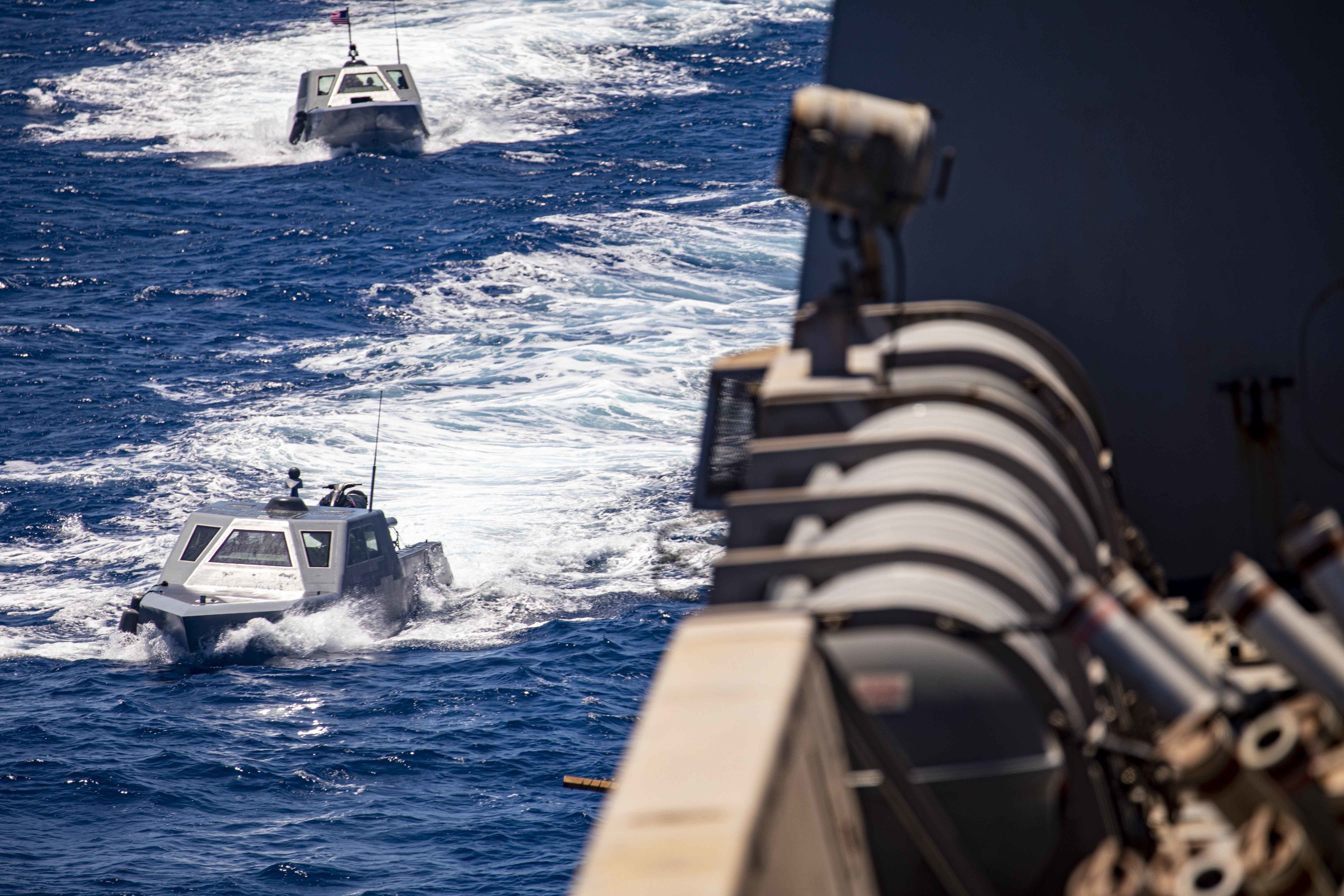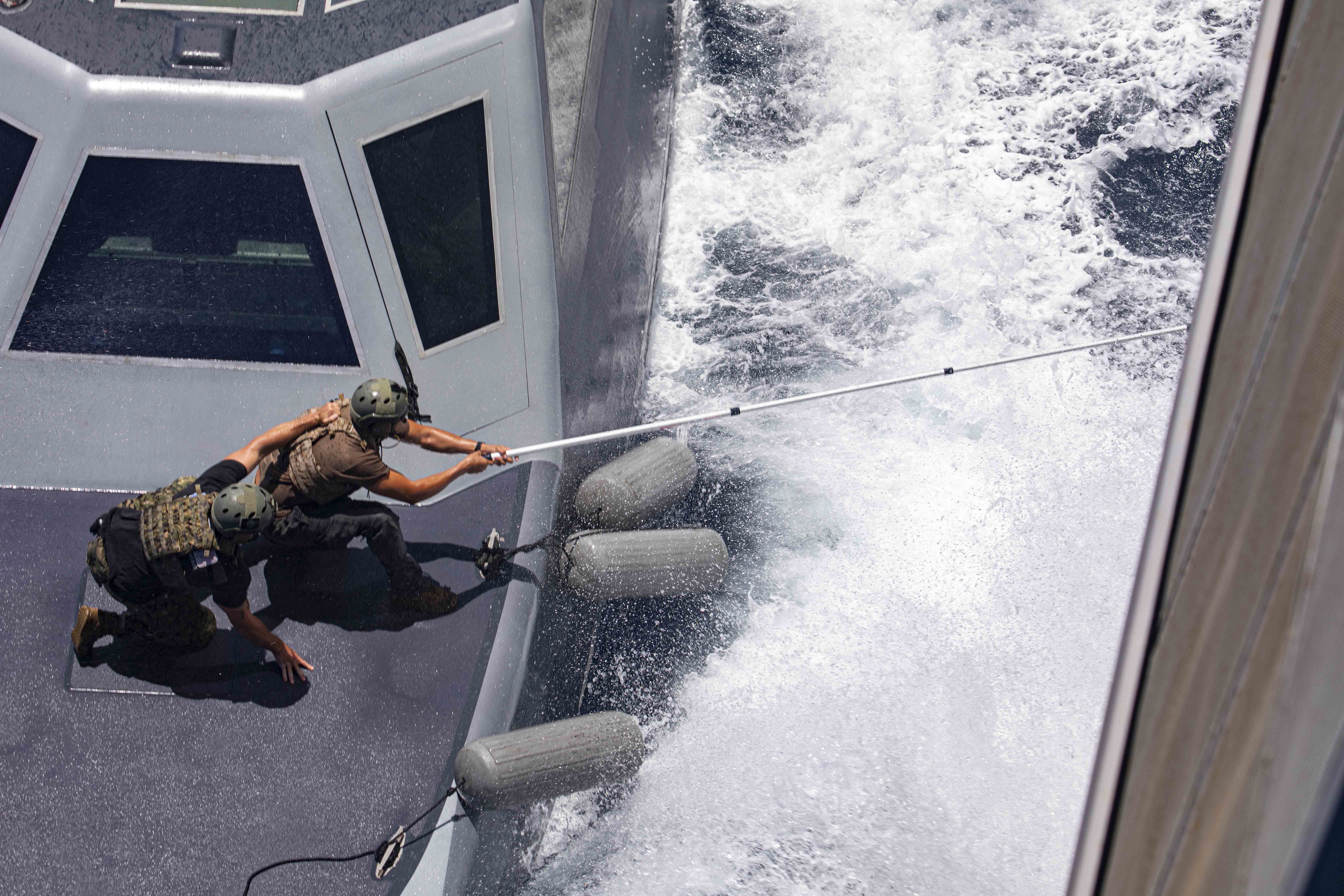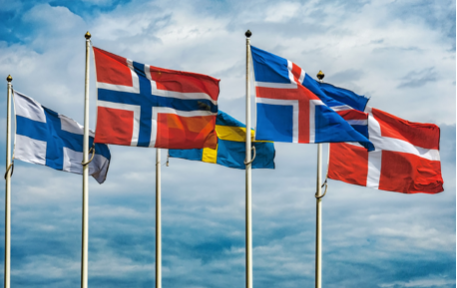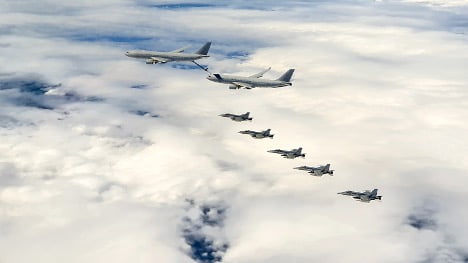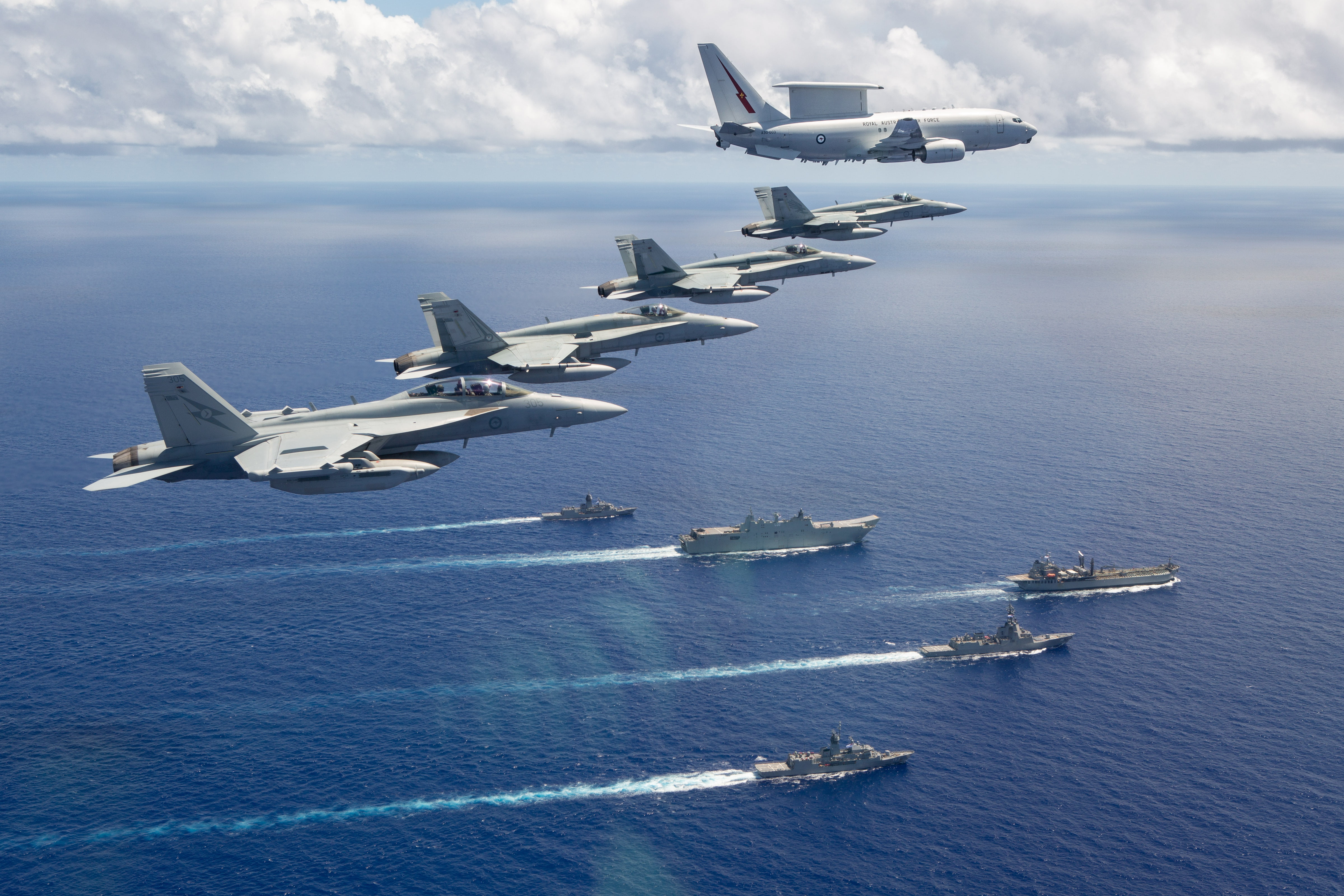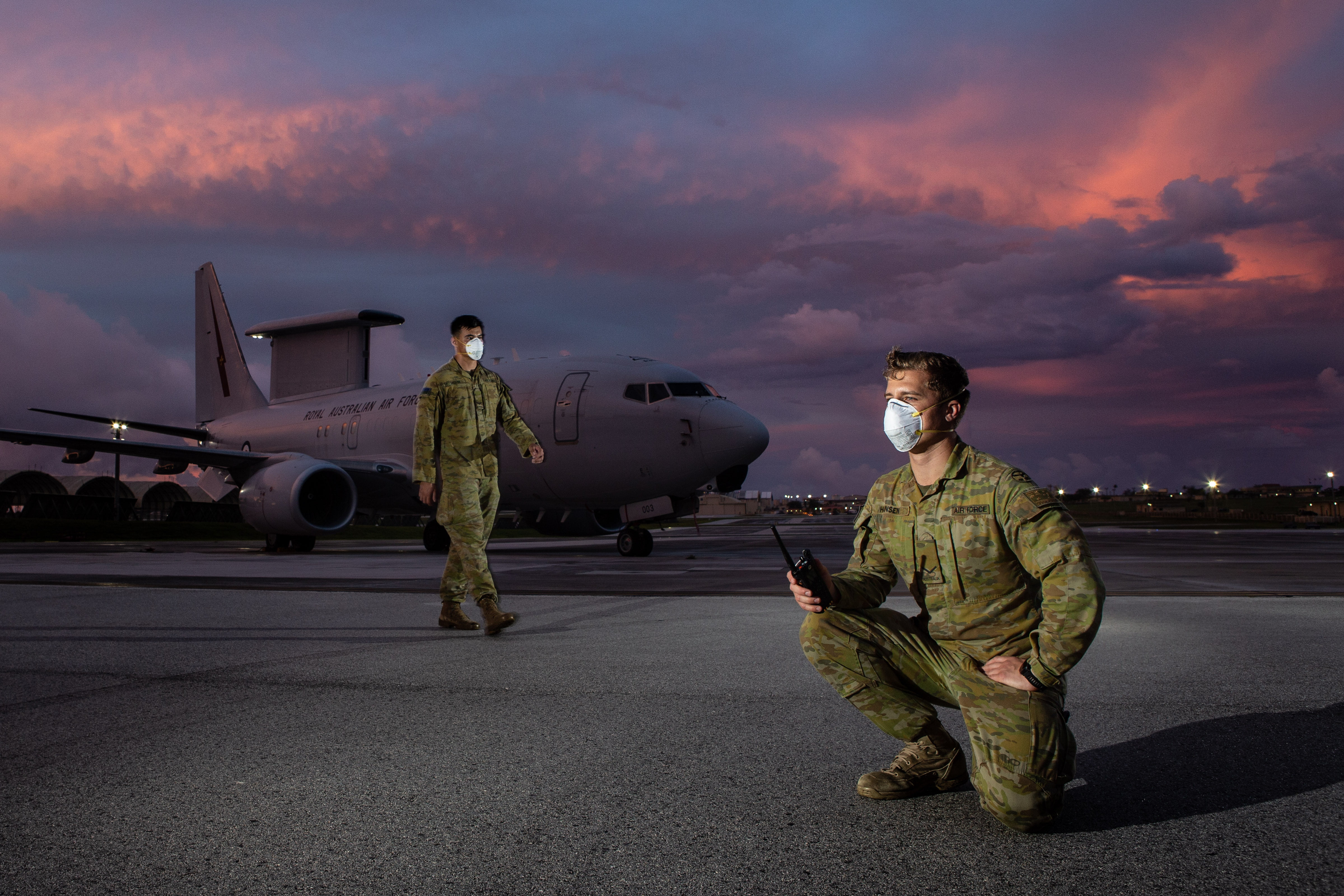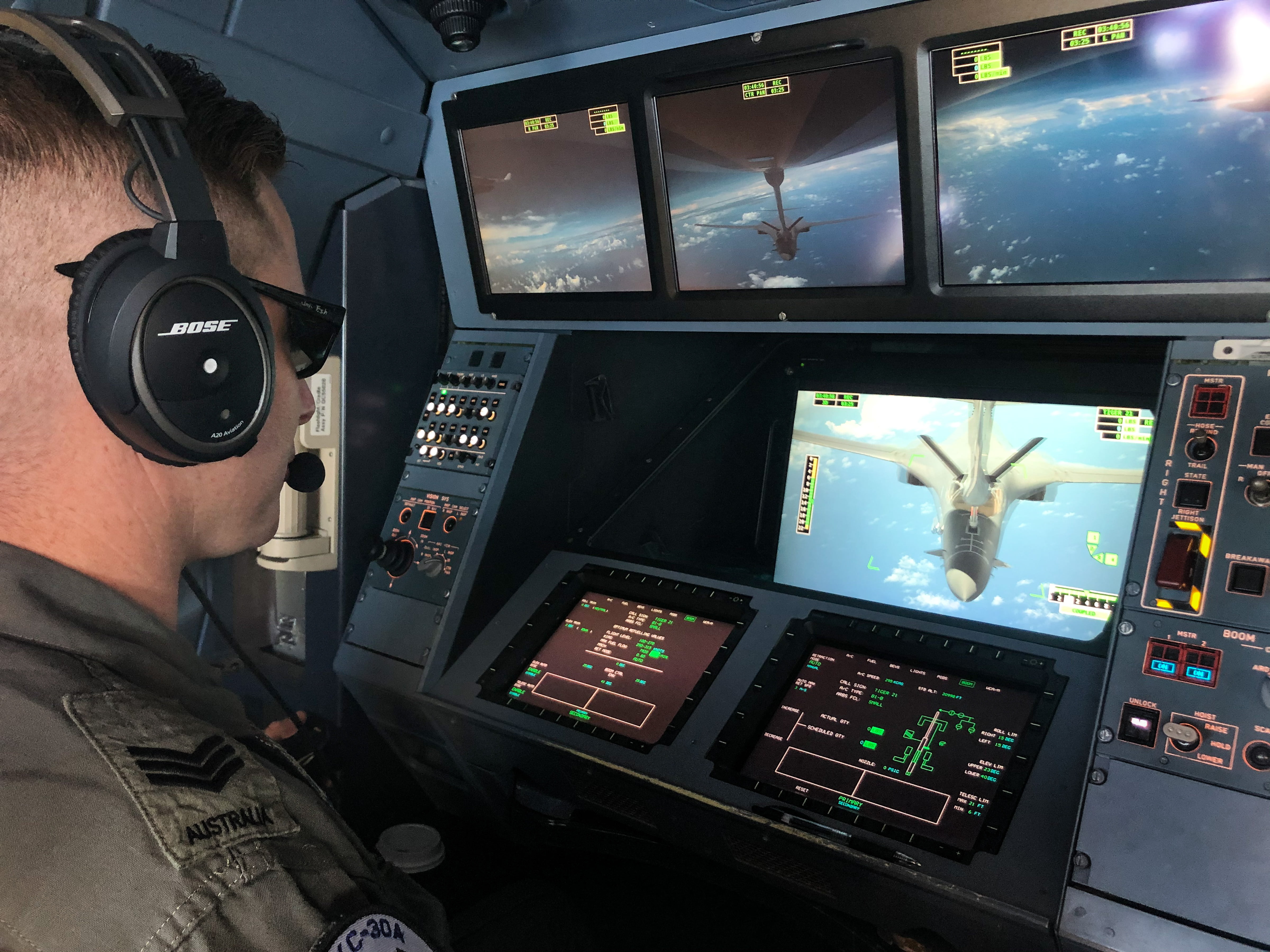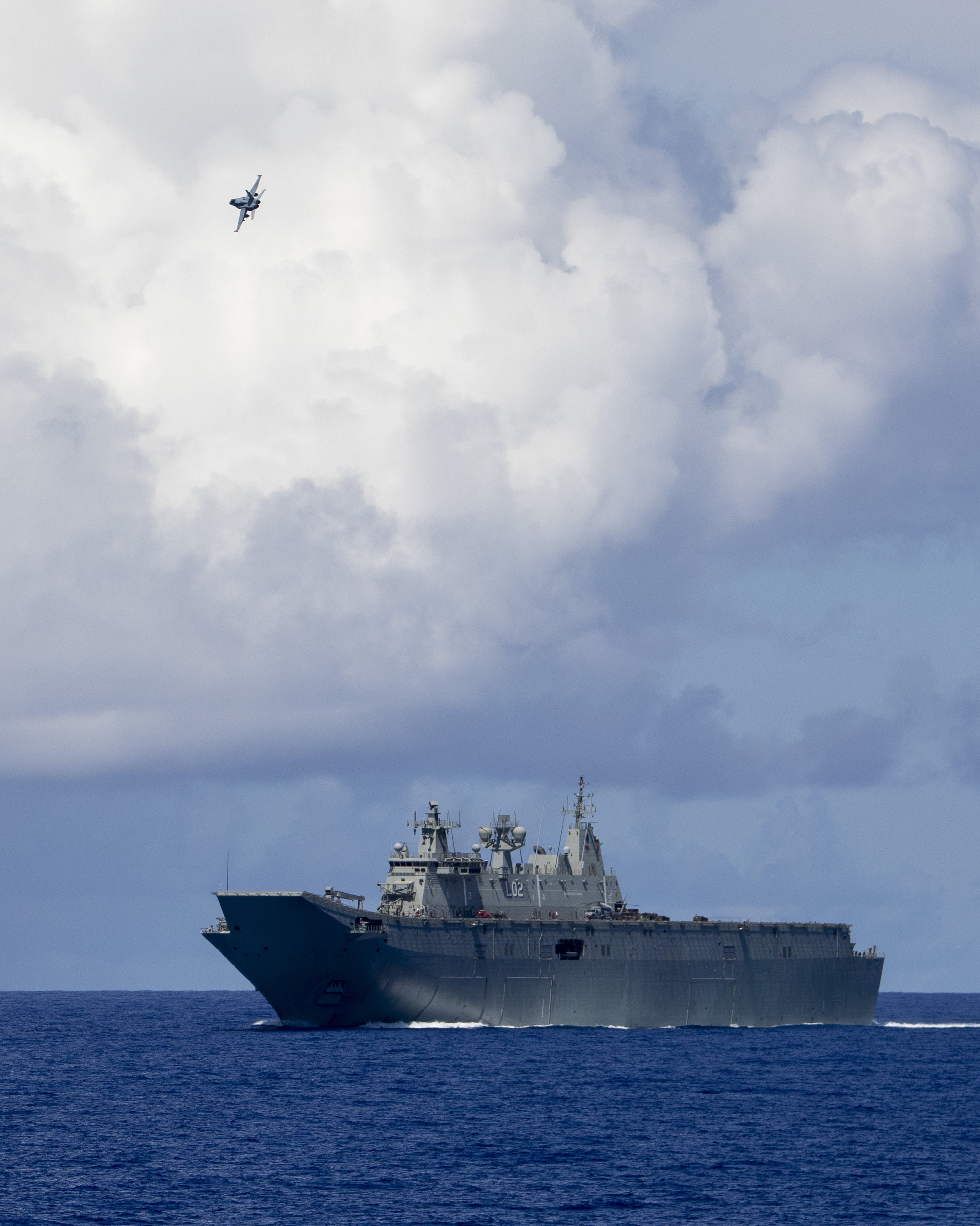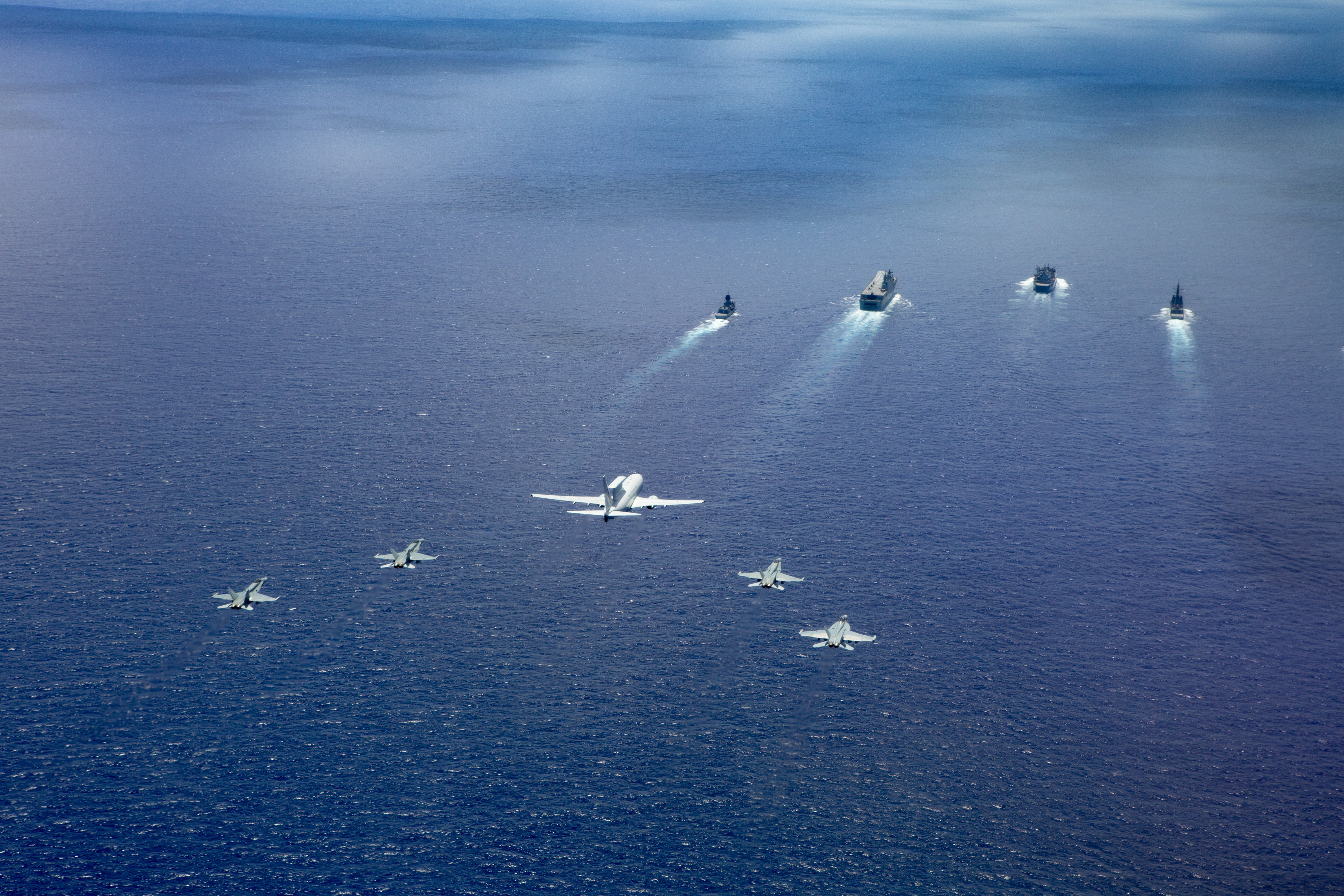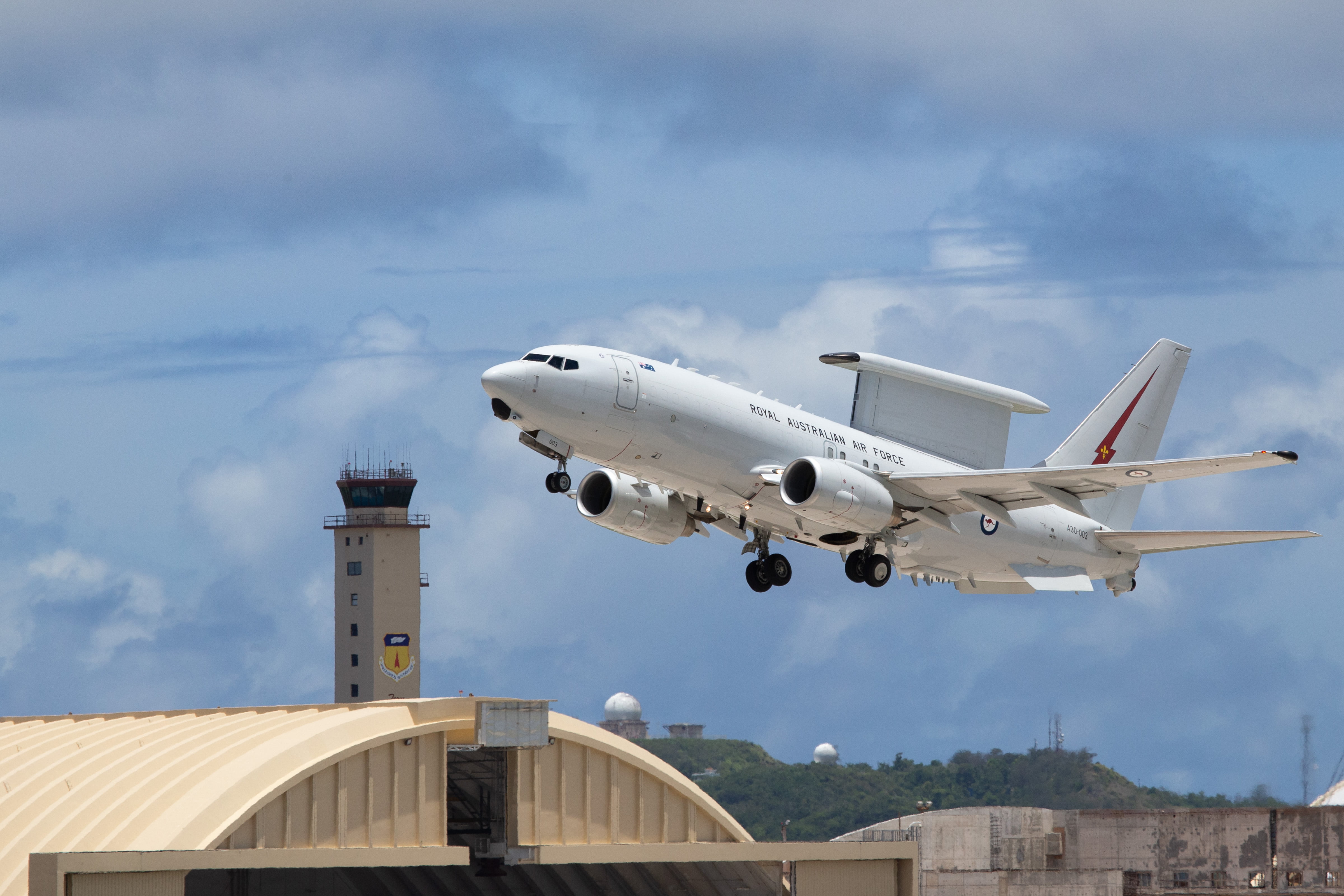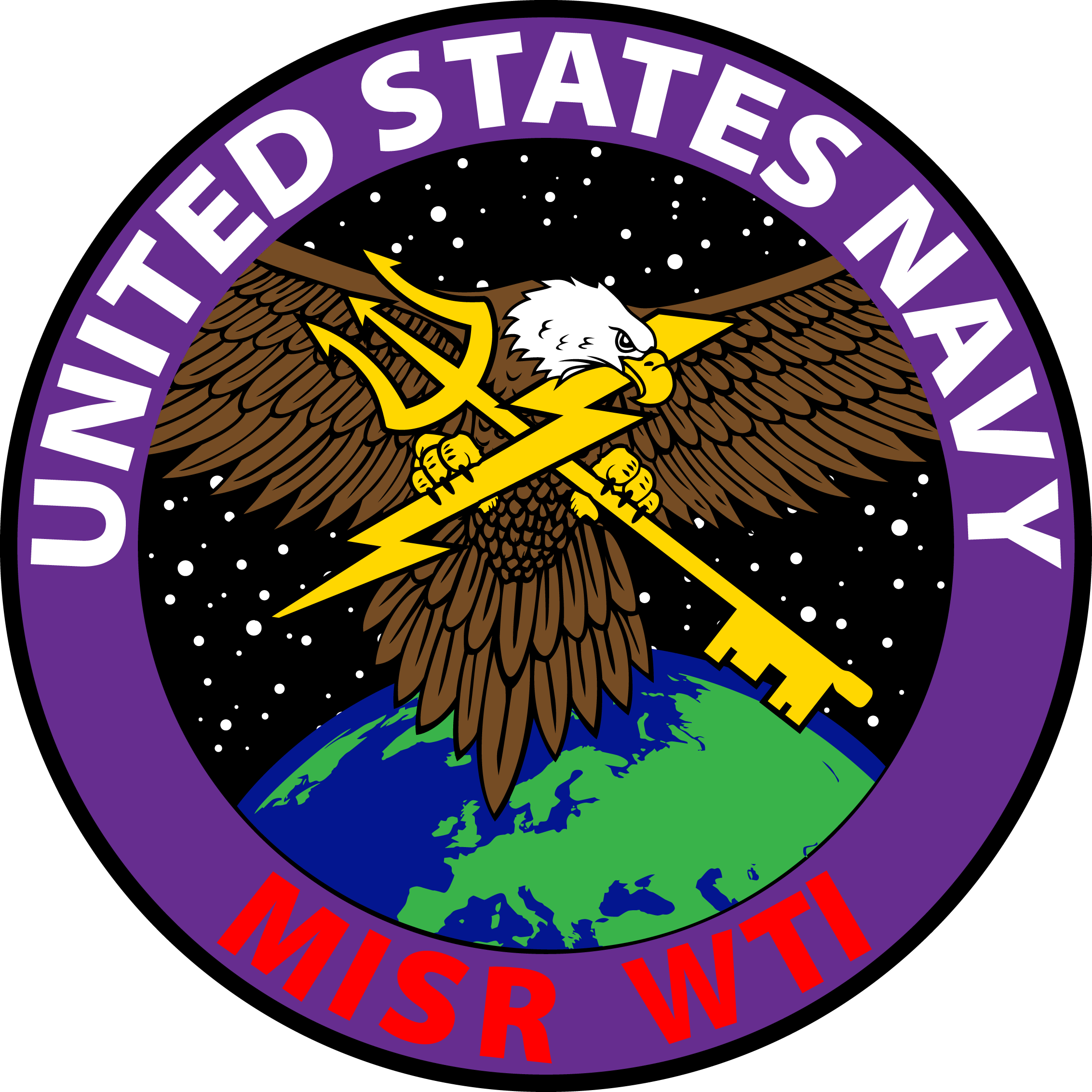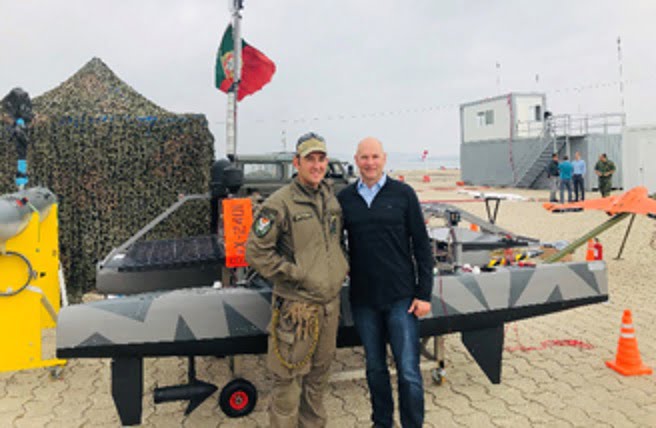By Robbin Laird
While it is important to think about 2030, the air-maritime force is in the throes of significant innovation NOW and laying the foundation for significant change in the near to the mid-term.
And this happening by reworking the integratability of key elements of the force and evolving the concepts of operations of key platforms working together in core functional warfighting areas.
A key case in point is the MH-60 Romeo helicopters as anti-surface and ASW assets shaping a way ahead to work more effectively in force integration with other key assets.
In the ISR world it is about reshaping ways P-8s and Romeos can work together.
This is a work in progress, but again, because these are EXTANT platforms the challenge is to focus on enhanced integrability to deliver enhanced capability in a key functional area, which is anti-surface warfare and ASW.
In part, this is allowing the Romeo helicopters to move away from a primary role of protecting the carrier projecting power to contribute to the land wars and returning them to blue water operations. The advanced sensors on the Romeo are then used as part of the reshaping of blue water operational capabilities.
The Romeos are providing significant contributions to Air Wing and surface asset long range maritime strike packages, and will only result in enhanced lethality with added focus on training and interoperability with the P-8s.
The P-8s are ISR and C2 strike aircraft that also do ASW.
How best to integrate them with the strike force?
How best to work through how they can contribute to fleet wide maritime strike?
My discussions and recent visit to NAWDC highlighted how there is a clear interest and priority to better integrate the P-8 into fleet strike operations.
This is a work in progress, but again this is an EXTANT platform, whose software code is being rewritten based on operations to provide for a more integrable capability or to sort through its role within the integratable air wing which is reshaping how a kill web enabled fleet can operate more effectively in blue water operations.
The Romeos are part of working a new approach to what the NAWDC team refers to as blue water expeditionary operations.
In an earlier piece, I highlighted how CDR Nathaniel “Velcro” Velcio, the HSM Weapons School, Atlantic looked at the way ahead.
And now during my July 2020 visit to San Diego, I had a chance to get the perspective of Captain Jeffrey Melody, Commander, of the Helicopter Maritime Strike Wing, Pacific (i.e. HSM Community) on the way ahead as well.
The Romeos deploy both to carriers as well as cruisers or destroyers. They deploy a 25-man detachment to cruisers or destroyers with two MH-60R helicopters; and for the carrier they deploy a five-helicopter CVN Element led by its Commanding and Executive Officers.
In addition, the HSC Community’s MH-60 Sierras are deploying for combat logistics and support as well as working with Fire-Scout detachments.
This means the community is working the concepts of operations of manned-unmanned teaming to deliver more persistent ISR in the extended battlespace.
There is a concerted effort to augment Romeo and P-8 integration.
According to Captain Melody, once a year there is a meeting held at Jacksonville bringing together the two communities where the junior officers who work the platforms can share operational experience and to work through ways to operate as a more integratable force.
And as I saw in a visit to Mayport in June 2020, there is an enhanced effort to work Seahawk and P-8 integration as well.
The West coast Helicopter Maritime Strike Wing works with the P-8s at Whidbey Island.
Obviously, the distance from San Diego to Washington is considerably greater than the short distance from Jax Navy to Mayport, which can enable the East Coast wing greater opportunities for integrated training.
This type of integration is clearly worked in Hawaii as well.
According to Captain Melody: “We look to overcome the distance hurdle by leveraging the long legs of the P-8 and have a standing invite for them to fly down to participate in the ASW portion of the basic phase certification exercises our Weapons School conducts throughout the year, along with an annual South American Navy submarine exercise, DESI-Ex, both on the SoCal Offshore ASW Range.”
This is a work in progress; but, again because these are existing platforms, they enhance the integrability of the fleet now and build out new capabilities as they work towards future operations as well.
Too often, there is the notion in defense public discourse which does not pay enough attention to the innovations in integratability going on right now.
This work is especially significant because working ISR integratability and third party targeting leveraging sensor networks is crucial now but a clear foundation for shaping an effective way ahead.
And as they do so, their ability to reach out to other elements of the sensor network, such as Triton allow, the Romeos and P-8s to do a better job supporting the strike fleet as well.
A key way to enhance the sensor network could well be to add passive sensors to some of the new assets coming into the fleet, such as the MV-22B, the MQ-25 or maritime remotes.
The key challenge is to ensure that those sensors provide information which can inform the strike force, rather than just accumulate information.
It is clear that the HSM community has worked hard the past few years to enhance their role in the high-end fight.
With regard to surface warfare core capability there has been a key shift to provide for such an enhanced role. In the period of support to the land wars, the HSM capabilities were primary used to for small boat warfare, primarily in the Restricted Waters transit arena.
Now they have transitioned to leveraging their advanced sensor suites to contribute to the long-range maritime strike and electromagnetic warfare arenas, which have become key areas of effort with great Power Competition and Distributed Maritime Operations.
Efforts such as greater integratability of the Romeo with the P-8 lay a solid foundation for further evolution of usable sensor networks which inform not debilitate decision making for the integrated distributed force.
This is a work in progress, but one which is delivering enhanced capability and lethality to the FLEET now, and not just a slide in a briefing about the 2030 future force.
Featured photo: LCpl. Denton A. Stewart, a flight equipment technician Marine assigned to Marine Medium Tiltrotor Squadron (Reinforced) 164, 15th Marine Expeditionary Unit, watches an MH-60S Sea Hawk, assigned to the “Wildcards” of Helicopter Sea Combat Squadron (HSC) 23, land aboard the amphibious assault ship USS Makin Island (LHD 8). Makin Island, homeported in San Diego, is conducting routine operations in the eastern Pacific. (U.S. Navy photo by Mass Communication Specialist 3rd Class Aaron Sperle)


